When I first unboxed the Nokia 7.1, the first thought I had was “Damn, the phone looks good. Nokia is really back!”.
Now, I know that the Nokia 7.1’s design isn’t exactly new, but this one is one of the first Nokia devices I have reviewed after the many mid-budget smartphones, all of which mostly sport the standard aluminium or plastic back.
The 7.1’s shiny glass back, sitting inside of that polished metal frame, and a very symmetric body, lends it a premium look that most phones in this segment miss out on. If you look at the biggest Nokia 7.1 competitors that we have – the Poco F1 and Mi A2 – they too feature the standard slightly-rounded-on-the-edges-metal-back, or in case of the Poco F1, the rubbery back with a subtle Aztec self-design (depending on which variant you choose). Barring the print, the two look very similar. The 7.1, however, makes you doubt the offering price of the device, which is Rs 19,999.
While the Nokia 7.1’s camera, design and it’s neat stock software interface only makes you grow fonder, the battery is the only turnoff. I spent a few weeks using the Nokia 7.1 as my primary device and here’s how my experience with the phone turned out to be.
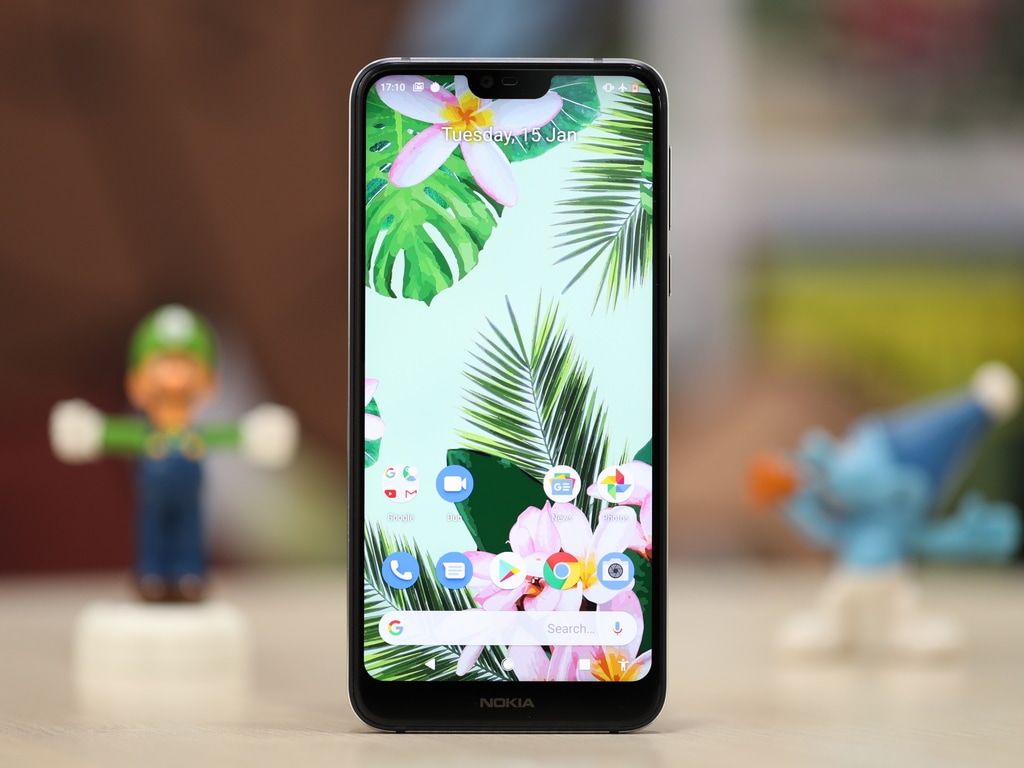
The Nokia 7.1 features a 5.84-inch display. Image: tech/Suraj Chaudhary
Nokia 7.1 Build and Design: 8/10
Like I have already fangirl-ed about it, the Nokia 7.1 has a beautiful build, with a symmetric glass back, and a metal rim around the edges of the phone, which give the phone a chic look. The model I got for review was the blue colour variant, which looks premium because of the glass back. But it also becomes extremely cloudy because of the fingerprint smudges, so much so that it actually looks like a different finish when it gets smudged. What the device lacks is an oleophobic coating (that would have prevented the smudges to an extent), so that’s a downside to the glass back that you will have to deal with.
The smartphone sports metal buttons for volume and power on the right edge. It has neatly cut out spaces for the Type-C port, a mono speaker grille at the bottom, and the 3.5 mm jack at the top. The SIM tray sits on the left edge, which has slots for a nano SIM and a hybrid slot for micro SD card/SIM.
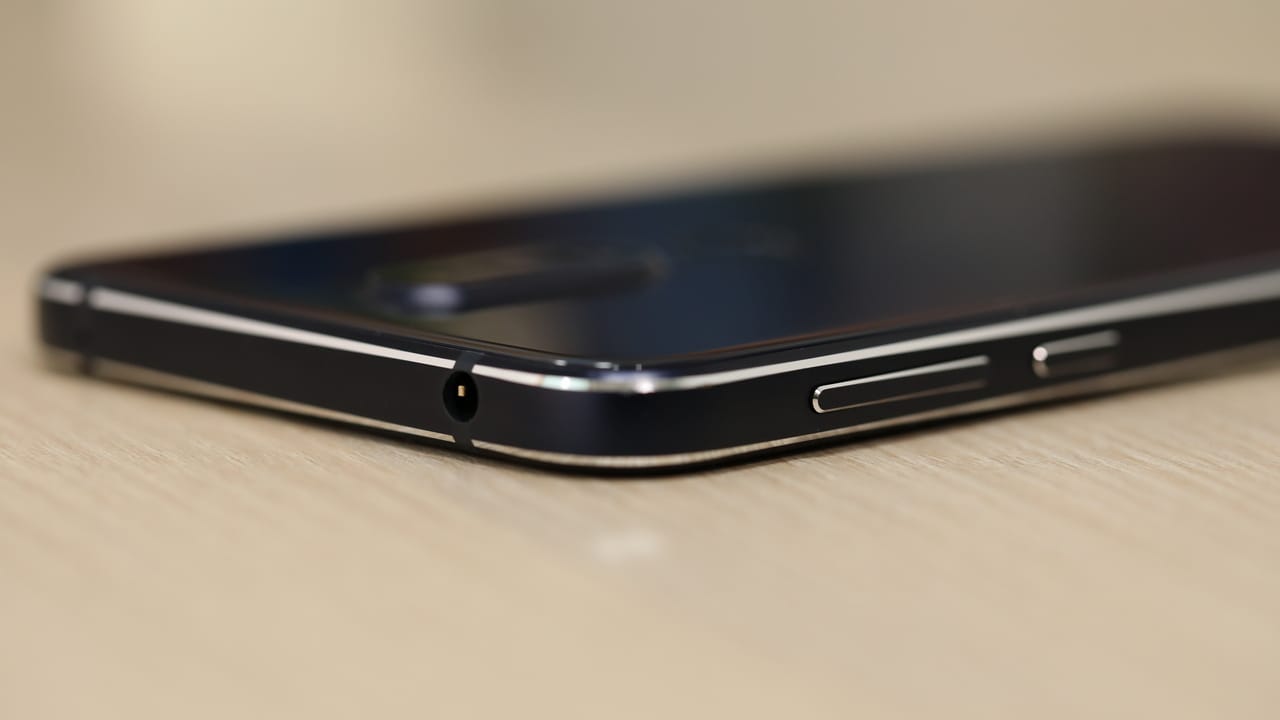
The Nokia 7.1 features volume rocker buttons and the power button on the right edge. Image: tech/Suraj Chaudhary
While the 7.1 looks similar to the 8.1 from afar, it's easy to spot and feel the flat sides of the phone once it’s in your hands. The flat sides are rounded off before it meets the glass back, which also has rounded edges that make for a really well-finished product when you hold it.
The fingerprint sensor sits at the rear, and right above it is the dual-camera setup. While it looks great aesthetically, the camera protrusion at back does not let the phone rest flat on a table, which makes it wobble a bit when you tap around the corners.
However, what I really appreciate is the size of the device. Despite my tiny hands, I am easily able to hold the phone, without the constant fear of dropping the device. This is something I felt when I held the slippery Mi A2 and Poco F1. They are both much larger in size and are even evidently heavier than the Nokia 7.1.

The Nokia 7.1 can be chosen over its competitors for everything but the battery. Image: tech/Suraj Chaudhary
Nokia 7.1 Camera: 8/10
After the design, the second most striking quality of the Nokia 7.1 is its camera. Hence, I am willing to break the usual flow of our review articles and talk about the camera first.
The Nokia 7.1 sports a 12 MP + 5 MP dual camera with Zeiss optics at the rear, and an 8 MP front sensor for selfies. The phone’s camera produces gorgeous colours in daylight, and does pretty great in low light and at night as well.
From a millennial's perspective, the Nokia 7.1's pictures clicked from rear camera needs no filters, especially the ones clicked in daylight. The images showcase no or low noise for pictures shot in daylight but fall slightly short on resolved details. The daylight shots have great dynamic range and contrast that translates to better clarity in pictures and more details in the shadows and highlights.
Low light images look pretty true-to-life in terms of colours but the luminance noise is a bit too much and ruins the image quality drastically. If you shoot in a dimly lit restaurant, the images look sharp but again fall short on resolved details. In completely dark lighting scenarios (street light, night landscapes), the focus tends to get soft, and the images blurry due to the lack of OIS. The images are almost unusable here.
I must also mention the Live Bokeh mode of the phone, which works really well. The phone’s camera app allows you to adjust the strength of the depth effect that you want in your image. When you switch to the mode you will see a bar toward the bottom of the frame that you can drag up and down to adjust the depth, while you are clicking the picture, which is why Nokia calls it a 'Live Bokeh' mode. The edge detection in this mode is also pretty accurate. The phone also lets you edit the depth or refocus after clicking an image in the stock Google Photos app.
The smartphone's camera lacks OIS and makes do with EIS, which is Electronic Image Stabilisation that only works in video mode.
You can check out the camera and video samples of the Nokia 7.1 in the scrollable gallery below or click here to go to Flickr album.
The rear camera also has an LED flash, which I did not use most of the time, since the camera does pretty well without it. I mostly used the flash as a torch.
Since the Nokia 7.1’s camera uses AI and depth-based imaging, it sometimes takes a few seconds to process and show you the results. That’s the lag similar to what you see on a Pixel phone. The camera app of the phone also tends to lag sometimes when launching the app. I missed a bunch of opportunities to click my dog making cute faces because the app wouldn’t launch immediately.
The Nokia 7.1 also comes with a Bothie mode, which started from the Nokia 8 and has since been featured in all Nokia phones. The feature is pretty useful if you are a blogger because it allows you to simultaneously record video or click images from the front and back camera.
Don’t miss the interesting conversation between me and my dog in the bothie mode.
The front camera of the phone is decent, it’s definitely not as impressive, I used the selfie camera with the beauty mode turned off. The colours of the front camera are great, but its pictures have a slight blue tint, which is not very pleasant to look at. However, what’s even more unpleasant is the weird flip-effect in the selfies.
I clicked a bunch of selfies from the Nokia 7.1 and always found that my face looked a bit weird but I couldn’t put a finger on what was off about them. However, when I compared the pictures from the Nokia phone to other ones, I realised that the selfies from the Nokia 7.1 look like they have been clicked from the rear camera and then flipped the other way. And the worst is that there are no way to turn this off.
Further, the selfie camera uses the display for flash (which means, the display of the phone brightens to maximum to throw light on your face, hence, doubling as a flash for the front camera). But the pictures clicked with flash from the front camera get a very soft focus. Basically, you will get some great selfies from this phone if you click pictures in the daylight or in a well-lit room, however, if you use flash on the front, get ready for some blurry photos.
Now, clearly, I am quite happy with the Nokia 7.1’s camera. However, to make sure I was giving you an objective opinion, I also compared the phone’s rear camera results to that of the Xiaomi Mi A2 and Poco F1. Both the smartphones are also priced in the similar price range, and the two also feature a 12 MP + 5 MP sensor setup at the back.
The 7.1 also supports 4K video recording at 30 fps. The videos from the phone are sharp, colours are true to life, contrast is excellent, and there isn't a lot of noise. Other than that, it also allows 1080p videos at 30 fps, which are similar in quality to the 4K videos. And from what I found, the 1080p video results are event better than what Poco F1 and Mi A2 offer.
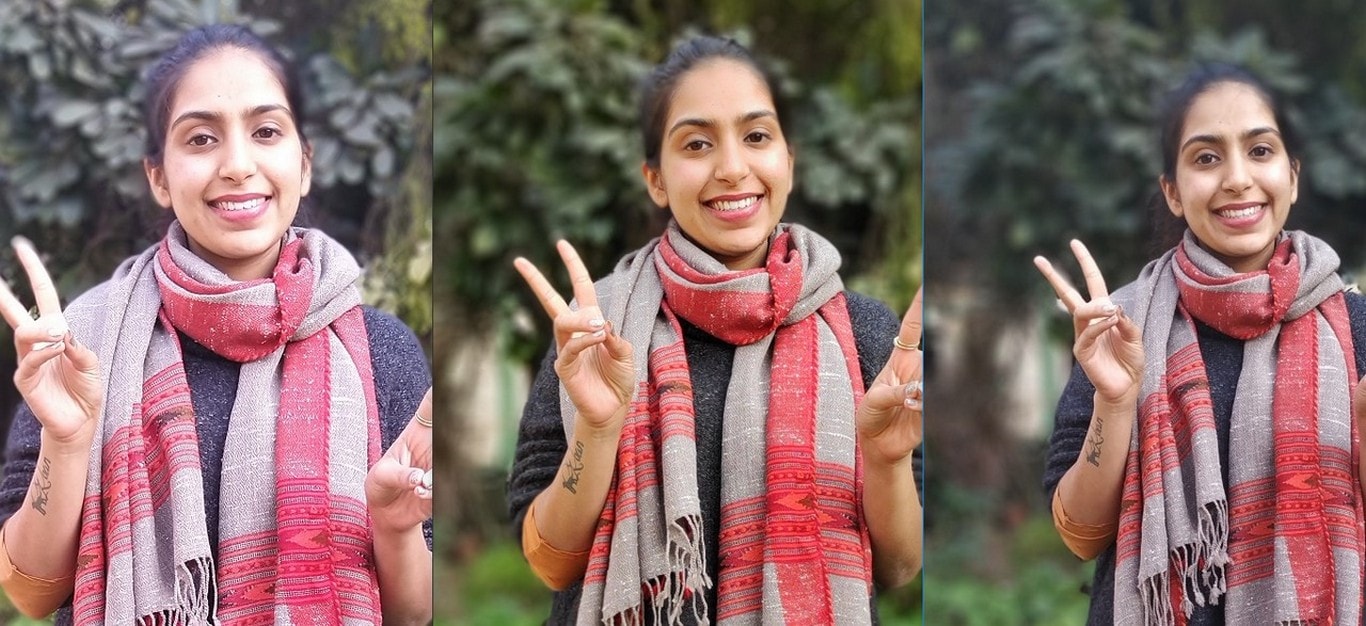
From left to right: Images clicked from Nokia 7.1, Poco F1 and the Mi A2
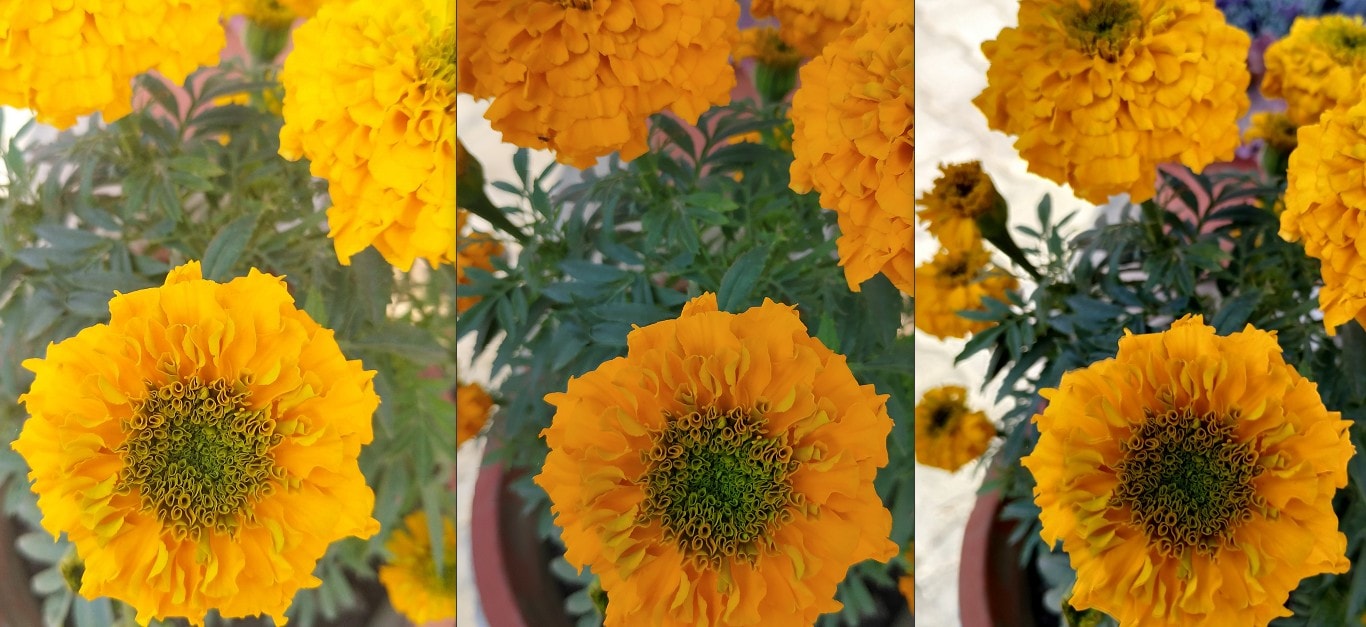
From left to right: Images clicked from Nokia 7.1, Poco F1 and the Mi A2

From left to right: Images clicked from Nokia 7.1, Poco F1 and the Mi A2
And the videos from the front camera are quite decent as well. Good colours, stability and not a lot of noise. Of course, if you are taking a selfie video, don't expect its camera to catch a lot of details in your background. One thing I must mention is the surround sound OZO audio support that Nokia phone offers.
When the results from the three are compared, the competition really seems to be between the Poco F1 and Nokia 7.1. While standalone the Xiaomi Mi A2 has a great camera, when compared with the Poco and Nokia phone, it falls a little short of the sharpness and colour the other two offer. However, between Poco F1 and Nokia 7.1, the two tend to lose and win by just a thread of a difference in different lighting conditions. Overall, the two are pretty much at par with each other.
However, the Nokia 7.1 easily loses to the Poco F1 when it comes to the front-facing camera. And naturally so, because the latter sports a whopping 20 MP camera for selfies.
[youtube https://www.youtube.com/watch?v=r6XO0pRXo2g]
Nokia 7.1 Features: 8/10
The Nokia 7.1 features a 5.84-inch IPS LCD FHD+ panel with a notch, with a resolution of 1080 × 2280 pixels and a 19:9 aspect ratio. The display is made of the ‘PureDisplay’ technology, that is aimed to offer higher contrast, and more vibrant colors.
Under the hood, the smartphone is powered by a Qualcomm Snapdragon 636 chipset, with 4 GB of RAM and 64 GB of storage, which you can expand to up to 400 GB using a microSD card. The Nokia 7.1 was released with Android 8.1 Oreo out of the box, but thanks to the Android One programme that it's a part of, the phone has already been bumped up to Android Pie.
For photography, the Nokia 7.1 sports a dual-camera system at the back, which has a 12 MP f/1.8 sensor, and a 5 MP f/2.4 sensor, accompanied with dual-LED flash. Up front, is an 8 MP f/2.2 AI camera for selfies and video calls.
For connectivity, the smartphone includes, 4G VoLTE support, USB Type-C, and the latest version of Bluetooth, among other things. Fuelling the Nokia 7.1 is a 3,060 mAh battery with support for fast-charging. It features a fingerprint sensor at the back.
Essentially, the smartphone’s features are up to the mark when compared to its competitors in the same segment, however, the lack of a facial unlock system hurts its reputation a little.
Nokia 7.1 Display: 8/10
The Nokia 7.1 features a 5.84-inch IPS LCD FHD+ panel that Nokia calls PureDisplay. The Nokia 7.1’s display features a small notch on the top, which houses the front camera and the earpiece. It has narrow bezels around the screen and fat chin at the bottom, which features the Nokia logo.
The display of the Nokia 7.1 is actually one of its highlights, with its support for HDR10, and a 1,000,000:1 contrast ratio. Interestingly, the smartphone also has a dedicated 16-bit engine that can convert SDR content to HDR in real-time. The upscaling works, too – although offers an unrealistic portrayal of the videos, which is a shame.
Playing an 8K video on the phone from YouTube, the Nokia 7.1 got did showcase some vibrant colours but I could spot a lot of highlight clipping. And oh, if you see, Netflix's official list of support devices for HDR 10, Nokia 7.1 is nowhere acknowledged. In short, the HDR 10 compatibility remains somewhat of a gimmick as it barely gets the job done right.
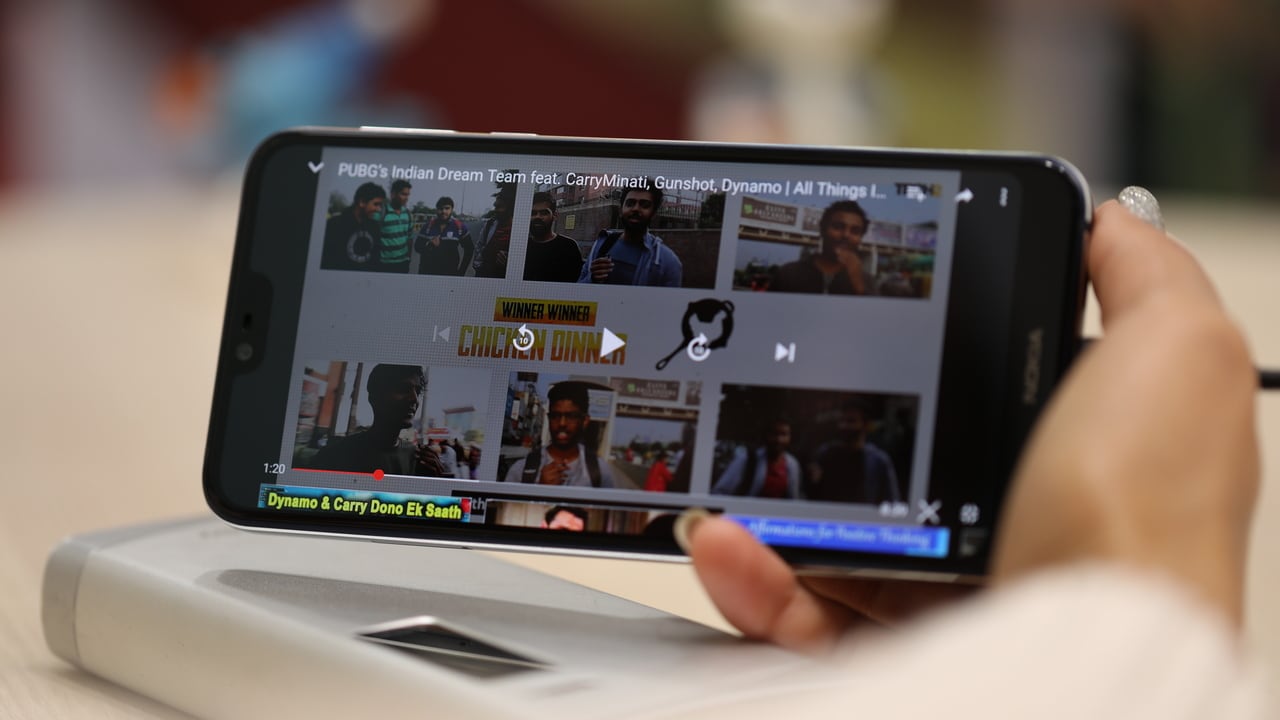
Despite HDR0 playback support, watching 8K videos on the Nokia 7.1 isn't that great. But for everything else, it's a delight. Image: tech/Suraj Chaudhary
Besides that, the colours on the display are vibrant yet natural. Watching videos and gaming on this phone is a lot of fun.
Under bright lighting conditions, the LCD display adapts to the bright outdoors pretty well, keeping text perfectly legible. Viewing angles are pretty comfortable too, which means holding the phone at an angle does not affect the legibility.
Nokia 7.1 OS and Software: 8/10
The Nokia 7.1 runs stock Android One programme, which is based on the latest Android 9 Pie. The user interface of the phone is very neat, easy to use, and fluid. The only instances of lag I ever noticed on the phone were inside the camera app, and while launching the app. Switching between apps caused no problem.
Other than that, the phone’s UI is bloatware-free, except for the Google suite apps.

Nokia 7.1 runs pure Android One programme.
Android One significantly limits what you can customise outside of changing the wallpaper or using a launcher app. However, you can change the shape of icons. The default circles are arguably the most attractive – but others give the phone a slightly different visual personality, if you may.
Nokia 7.1 Performance: 8/10
Moving to the smartphone’s performance, the phone can comfortably be your daily driver. I cloned around 100 apps on the phone from my personal devices, of which I was regularly using YouTube, Instagram, Twitter, Facebook, Telegram, Messenger, Google Keep, Google Docs, Google Sheets, Google Maps, Apple Music, Gmail, Outlook, and I am sure I am still missing out on a bunch. My point being, that I am that kid whose parents complain that everything that’s wrong in the world is because I am constantly on my phone. And despite this obsessive-compulsive usage, the phone kept on running without a hint of stutter or lag. Apps also never crashed.
Like I mentioned earlier, I also played PUBG for the first time while testing this device. I was very happy with the graphics (provided they were set to Medium), and how much of a smooth sailing experience it was through the game, except that I was crawling to save my life throughout, so not at all smooth sailing in that sense.

Playing games was a smooth experience on the Nokia 7.1. Image: tech/Suraj Chaudhary
I also played my usual Candy Crush, Word Puzzle, and Prince of Persia on the device, all of which were a good experience too, with no stutters. The phone did not warm up either.
But (there’s always a but), the phone does very poorly in terms of audio. While the Ozo audio support in the Nokia 7.1 captures nice surround sound audio, the audio output on the device is quite screechy. You just CAN NOT play loud music on the phone's speakers, it becomes more noise than music.
The phone also comes bundled with a pair of earphones, which really are there for the sake of it. They use a light, almost cheap-looking plastic, and offer just an average audio output.
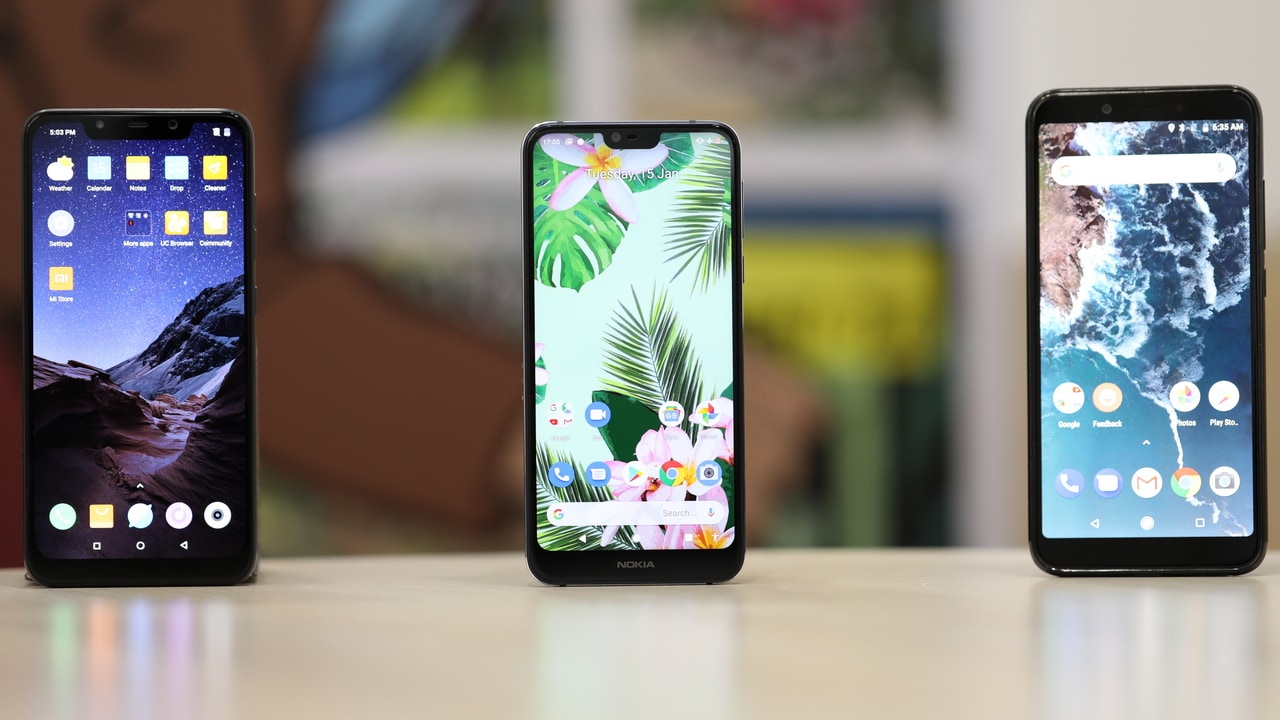
Nokia 7.1 competes against Mi A2 and Poco F1. Image: tech/Suraj Chaudhary
The phones’s Qualcomm 636 SoC seems good enough for the mid-range when it comes to daily usage, but when pitted against the Poco F1 (Snapdragon 845 SoC) and Xiaomi Mi A2 (Snapdragon 660 SoC), the Poco takes the cake, with the Mi A2 coming in second.
Nokia 7.1 Battery life: 7/10
And here’s the phone’s Achilles’ heel – the battery.
Despite a 3,060 mAh battery, the phone loses juice way too fast. And in 2019, that is unacceptable. I was fetching for my charging chord every 13-14 hours. I used the phone for a good two weeks, hoping for the Adaptive Battery feature to kick in, but found no relief. This meant, by the time I would get out of office, the phone’s battery would already be low.
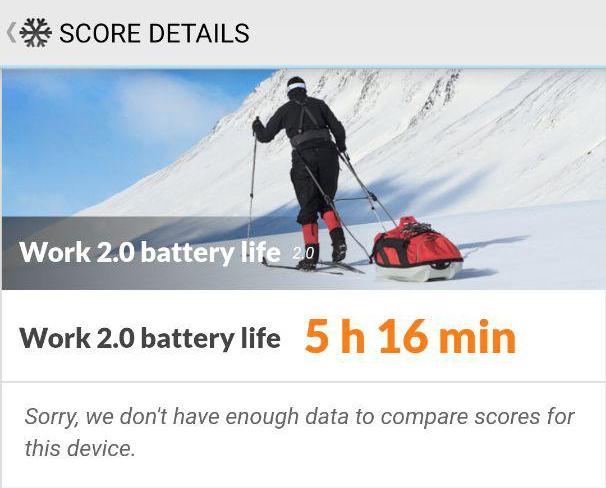
Nokia 7.1 loses solely because of its battery performance,
Even on the benchmark, the Nokia 7.1’s battery doesn’t do so well. In comparison, Mi A2 and Poco F1 both are a better option than this one in terms of battery.
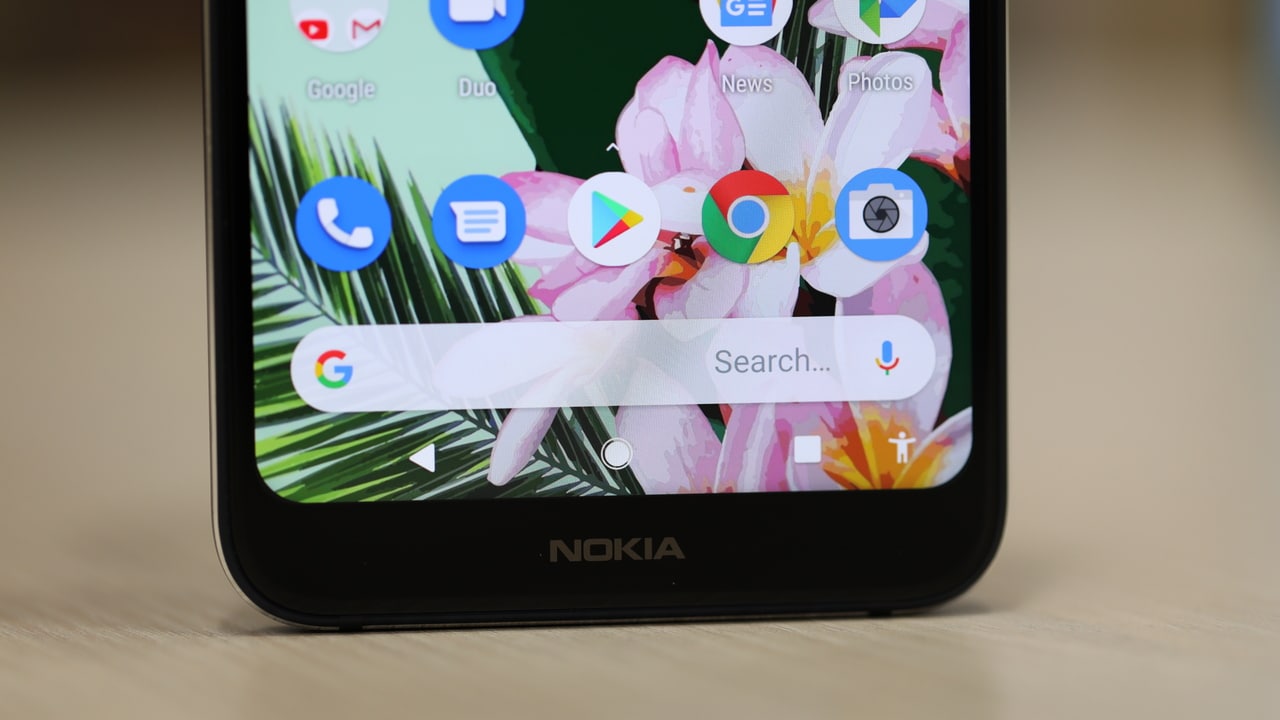
Nokia 7.1 sports a notch, and a fat chin. Image: tech/Suraj Chaudhary
Nokia 7.1 verdict and price in India
At a price of Rs 19,999,
Good display ✓
Great rear camera ✓
Smooth performance ✓
Neat UI and latest OS ✓
Premium design ✓
If the checkboxes above serve your purpose, you can go in for the Nokia 7.1 without a doubt. However, buying the 7.1 also means, compromising a little on the battery life.
If you look at the smartphone’s competitors, the Xiaomi Mi A2 offers almost all of that, including better battery life, however, the rear camera quality of the Nokia 7.1 would still be better. The top variant of the Mi A2, which was earlier priced at Rs 18,999, is now available for Rs 15,999 after a recent price cut. So if you are ok with a slight bargain on the camera, you can get a much better deal with the Mi A2 at Rs 4,000 less.
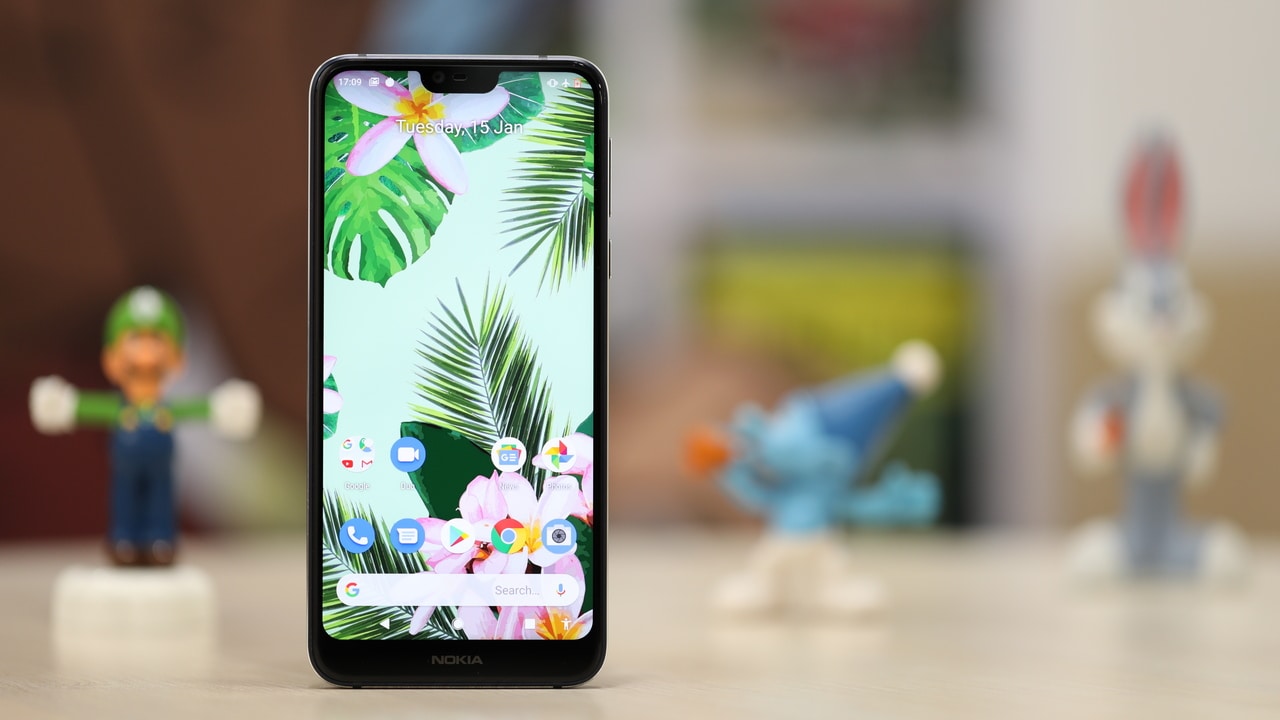
The Nokia 7.1 has a very comfy-to-grip size. Image: tech/Suraj Chaudhary
Overall though, the Poco F1 is definitely a better package. While Nokia 7.1 and Poco F1 are at par at most of the features and specifications, the Poco also has a better battery performance. The lower variant of the Poco F1, which is priced at Rs 20,999 (just Rs 1,000 more) also comes with 6 GB of RAM, as compared to 4 GB RAM on the Nokia 7.1. Though you must consider that Nokia 7.1 vs Poco F1 means, Android One vs MIUI OS. So, unless Xiaomi's custom UI is a problem, I'd say go for the Poco F1, no bargain here. But if you are looking for something stylish, the Nokia 7.1 is a better choice.
Tech2 is now on WhatsApp. For all the buzz on the latest tech and science, sign up for our WhatsApp services. Just go to Tech2.com/Whatsapp and hit the Subscribe button.
Source

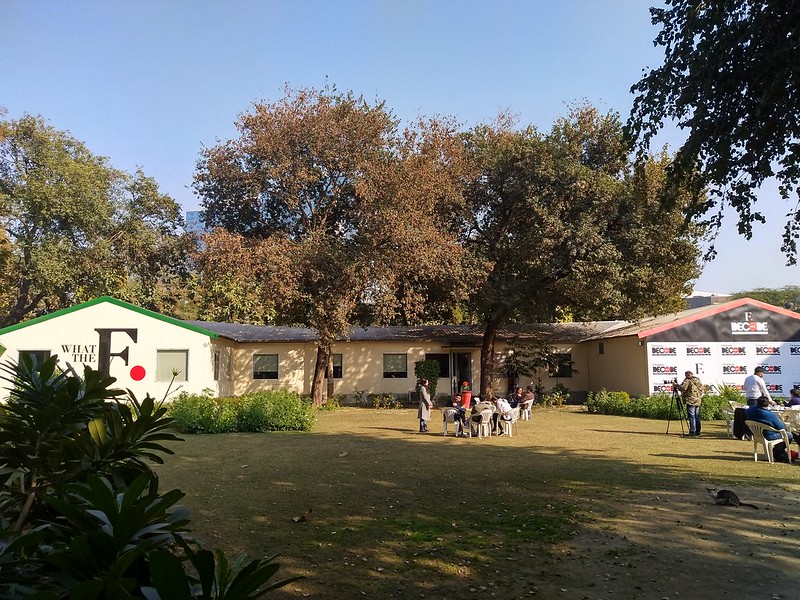

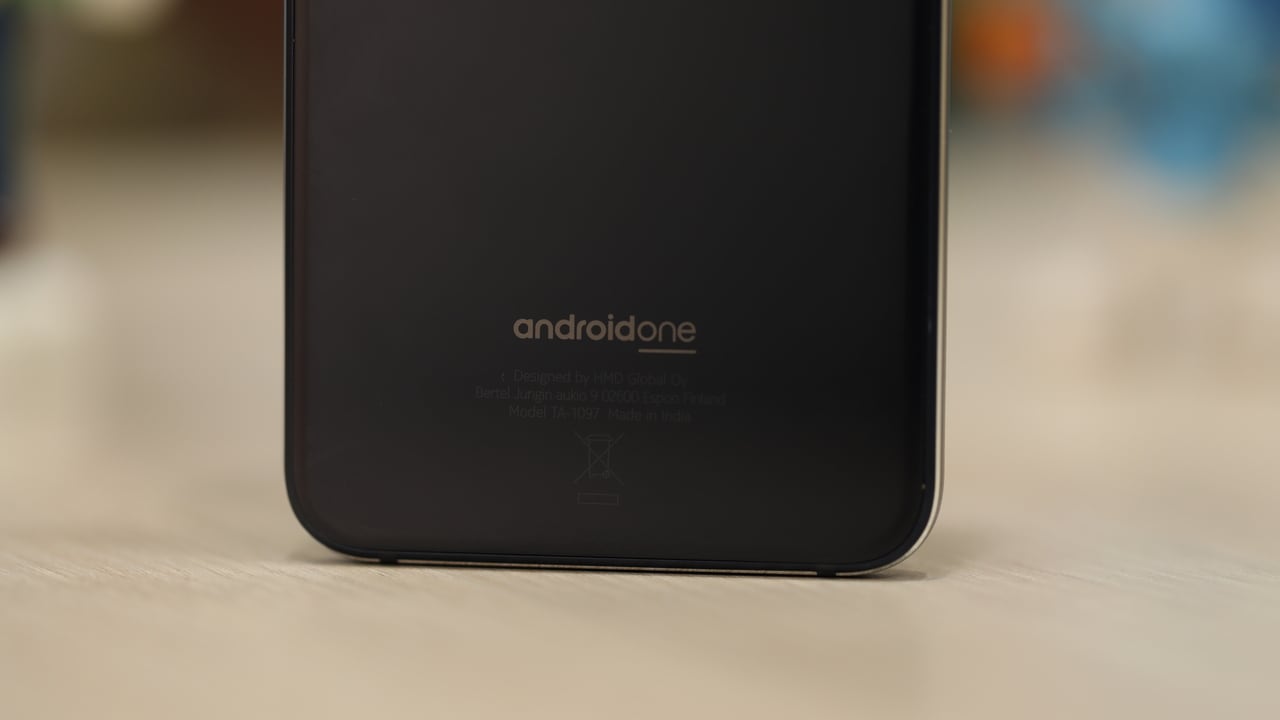
Hmmmm
ReplyDeletetlgoo
ReplyDelete